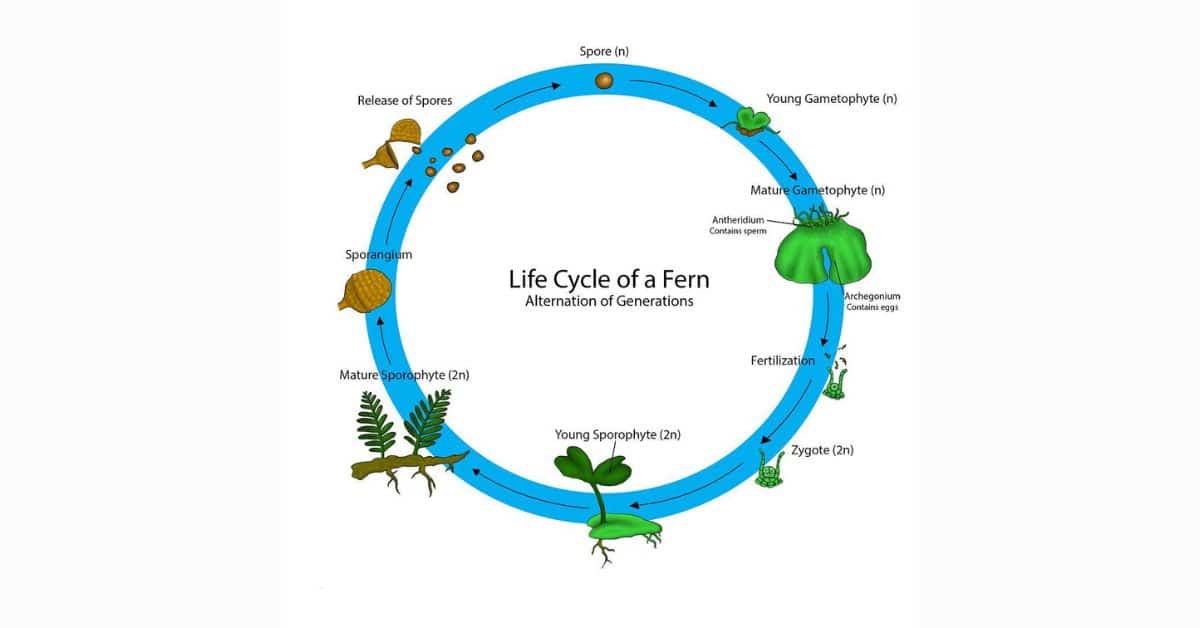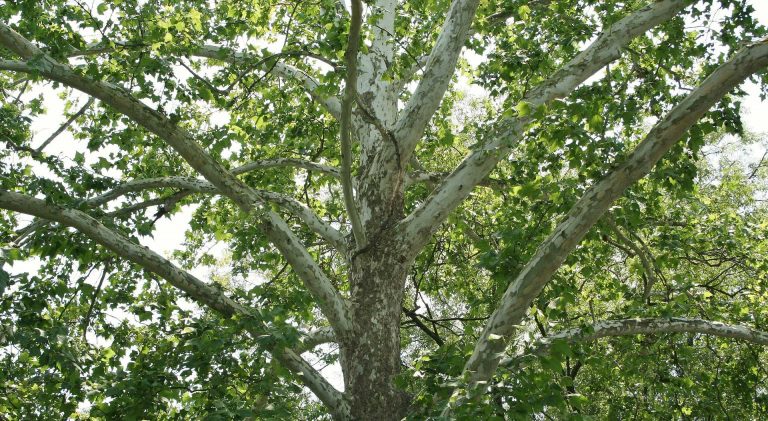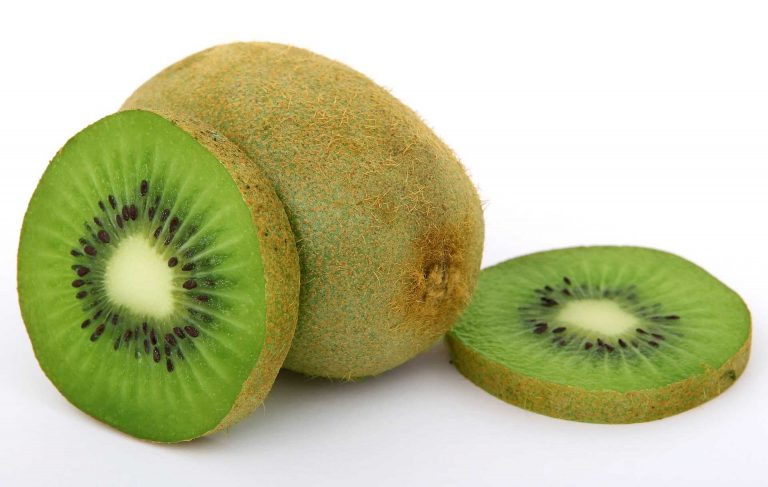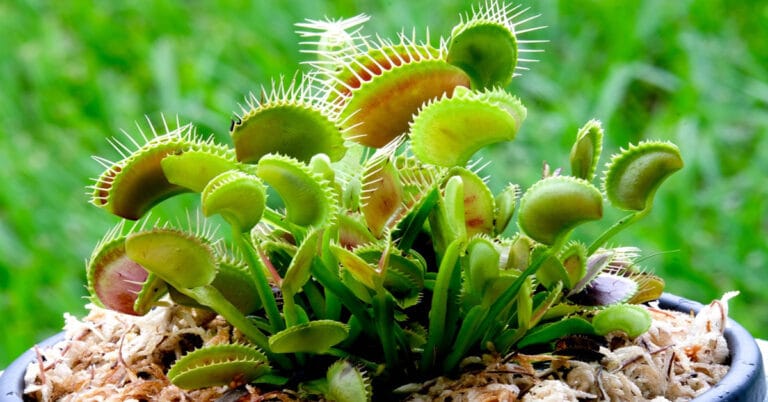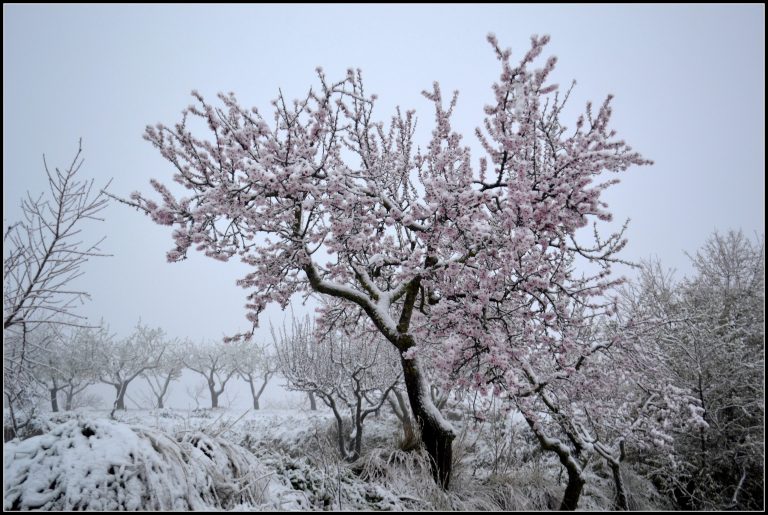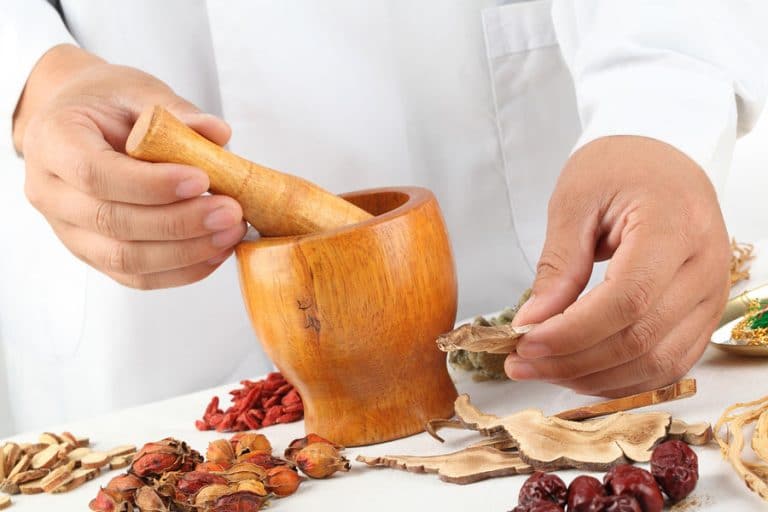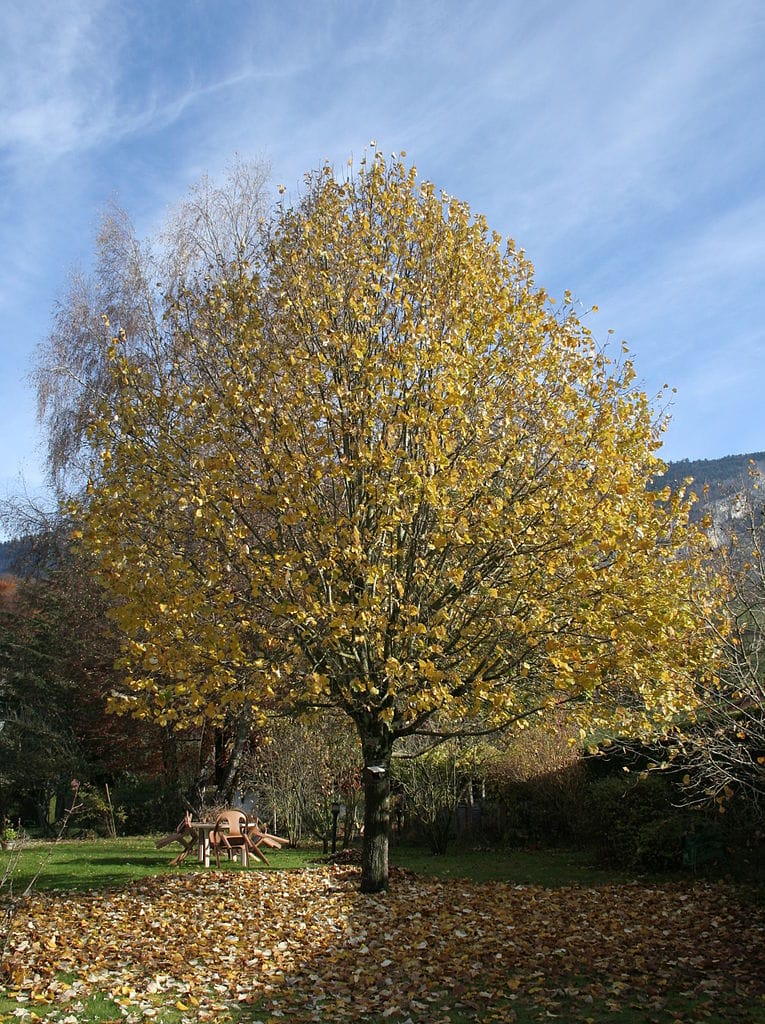Fern Life Cycle – Complex Process of Alternation of Generations
Ferns are very unique and remarkable plants. They do not bloom in order to spread. Instead, they use spores to physically propagate. A fern’s life cycle is quite dissimilar from the life cycles of many other plants. They have an intermediate state known as a gametophyte that develops into an adult fern. The life cycle of plants has two distinct phases – gametophyte and sporophyte stages.
If you are curious about this amazing plant and want to know more, this article below will share some important facts and information about the fern life cycle.
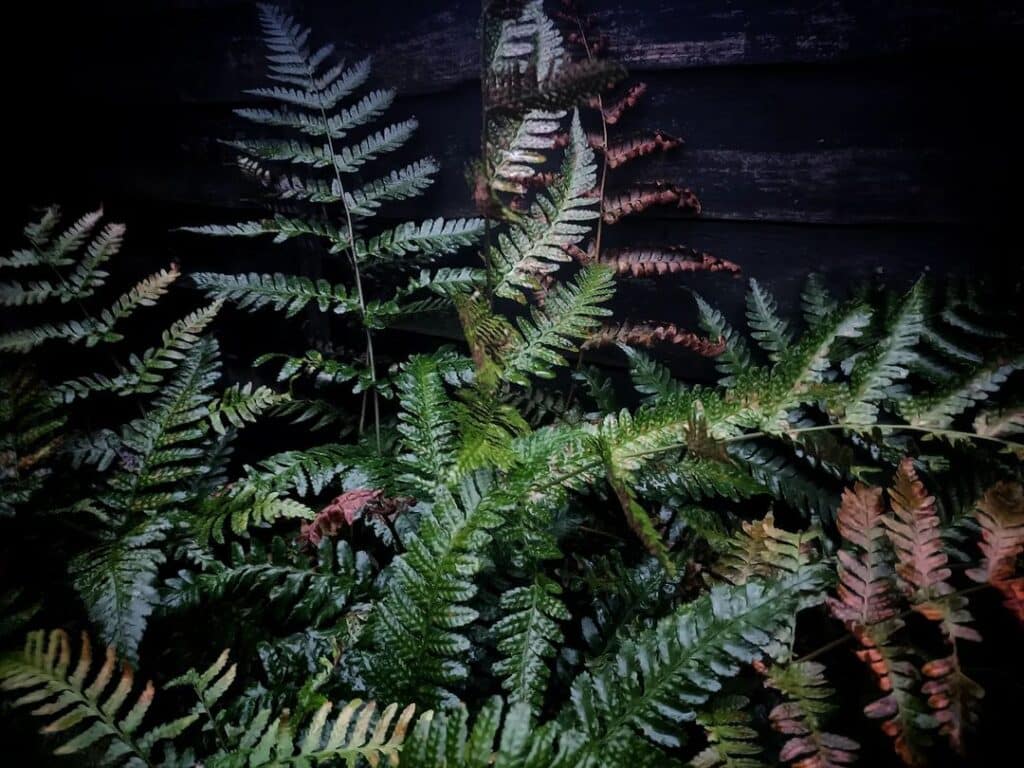
Overview of The Fern Plant
Ferns have been a significant part of the earth’s ecosystem since ancient times. Scientists believe that terrestrial vegetation first appeared on Earth 475 million years ago, based on fossil evidence. Vascular plants split off from non-vascular plants 400 million years ago, and ferns shortly followed.
Some of the main groups of ferns can be identified in the fossil record from 350 million years ago. Given that some invertebrate animals had already landed by this time, ferns are much more ancient than dinosaurs and older than the majority of terrestrial animals. From the extremely small kidney fern to the 20-meter-tall tree fern, ferns appear in a range of shapes and sizes. Ferns all have the same fundamental composition.
Fern Plant Structure
The fern’s stems are known as fronds. The lamina, which is typically a flat blade on a stem, is frequently split into pieces. The frond may be straightforward and unequally split, or it may have several divisions that are called pinnae. The root produces fresh leaves. They are closely wound into a spiral, known as a fiddlehead or koru, and as they get older, they gently uncoil. Fronds serve two purposes, in addition to respiration, they also help plant breeding.
The spores develop inside sporangia, which are containers. On the bottom of the fronds, these are waiting to be discovered. Not all fronds have sporangia beneath them. Fertile leaves are characterized by the presence of sporangia. The seeds are released when the sporangia split wide.
Alterations of Generations
For the fern life cycle to be complete, there must be two generations of vegetation. This is referred to as “generational variation.” One generation is diploid, which means that each cell contains the entire genetic complement or two equal pairs of chromosomes. The sporophyte, a member of the diploid generation, is a leafy plant with seeds.
The seeds of ferns do not develop into green sporophytes. They don’t resemble blooming plant spores in any way. They instead create diploid progeny. A haploid plant has one pair of chromosomes, or half the genetic makeup, in each cell. The plant in this form resembles a tiny heart-shaped plantlet.
The plantlets will sprout and develop into tiny gametophytes heart-shaped plants. The gametophytes can reproduce themselves or other organisms by producing both sperm and egg cells. The mature fern will start to develop after fertilization.
Stages of Fern Life Cycle

Before genetics was fully understood, fern reproduction baffled biologists. It seemed as though seeds were the source of mature ferns. This is partially accurate, but the spore-borne plantlets are genetically distinct from mature ferns.
A plant may self-fertilize because sperm and eggs can both be generated on the same gametophyte. Self-fertilization has the benefits of reducing spore loss, eliminating the need for an external gamete carrier, and preserving the characteristics of organisms that have acclimated to their surroundings.
On the other hand, cross-fertilization has the benefit of possibly introducing new characteristics to the species when it happens.
Mitosis & Meiosis
The process that creates eggs and sperm in mammals and blooming plants is meiosis. The diploid sporophyte creates haploid spores. This is the first stage of the fern life cycle. Each spore undergoes mitosis to develop into a green prothallus (gametophyte).
Stage Two
Through the mitosis stage of the Fern life cycle, each prothallus creates gametes. On the same plantlet, a prothallus frequently generates both sperm and ova. The gametophyte has leaves and rhizomes, whereas the sporophyte had blades and rhizomes. Sperm are created within the antheridium, a structure found inside the gametophyte. An archegonium, a comparable structure, is where the embryo is developed.
Stage Three
Sperm use their cilia to travel to an egg and fertilize it when there is water present. The prothallus continues to be connected to the implanted embryo. The DNA from the egg and sperm combine to create a diploid embryo, which is what the egg is. The fern life cycle is finished when the embryo undergoes mitosis and develops into a diploid sporophyte.
Last Stage of Fern Life Cycle
Gametophytes that have been seeded start to resemble a leafy growth. After a while, tiny leaves will start to emerge from the vegetation. Young fronds may readily die if exposed to full sunlight for a prolonged period of time. This is due to the minuscule stems‘ inability to withstand direct sunlight and their subsequent drying out.
The plant has a higher chance of surviving once these small fronds expand in size. The plant can endure periods of intense sunlight when the veins are fully developed, allowing hydration from the soil to be readily carried to the outermost leaves. When the plant reaches its full size and maturity, it will produce seeds on the undersides of its leaves, and the fern life cycle will restart.
Other Ways of How Ferns Reproduce
Sexual reproduction is referred to as the “Fern life cycle.” Plants, on the other hand, can reproduce asexually.
A sporophyte turns into a gametophyte in apogamy without reproduction. When the environment is too dry for pollination, ferns resort to this technique of reproduction.
At their prolific frond tips, ferns can generate young plants. The front of the baby fern droops toward the earth as it gets heavier due to its weight. Once the young fern has established roots, it can live independently of the adult plant. The proliferating young plant shares the same genetic makeup as its progenitor. Ferns do this to hasten the process of reproduction.
Rhizomes, which are fibrous structures that mimic roots, can penetrate the earth and produce new ferns. Rhizome-grown ferns are also genetically similar to their progenitors. Another fast fern reproduction technique and a significant part of the fern life cycle is this one.
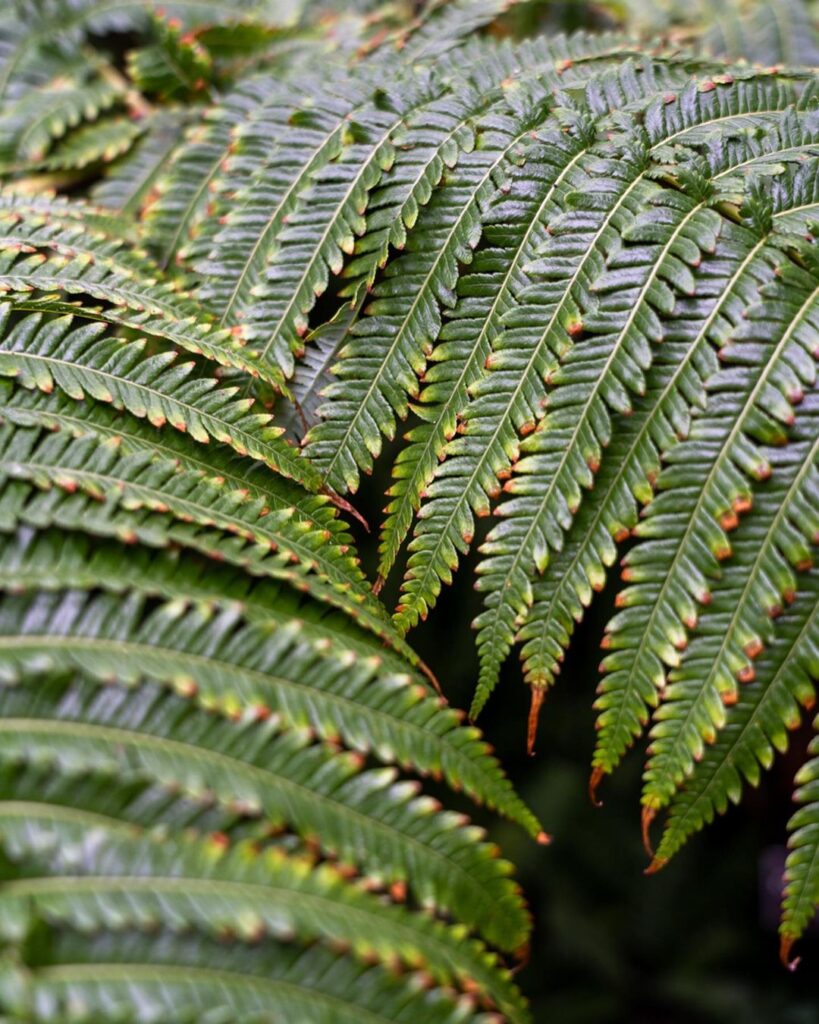
Fern Habitats
The fern life cycle greatly depends on the environment, weather conditions, and other factors. So, when exploring the fern life cycle, it is also essential to briefly overview its habitat.
Some fern species can thrive both on earth and on rocks, while others are restricted to rocky environments and can only be found in the cracks and crannies of mountain walls, boulders, and taluses. Plant species are more closely related to acidic rocks like granite, sandstone, and quartzites than to alkaline rocks like calcites and dolomites. A few species seem to be restricted to minerals that are serpentine and similar.
Up to two-thirds of the ferns in the tropics may develop as epiphytes on the lower, shaded stems and branches or in the treetops.
Some ferns that are referred to as epiphytic are true climbers that start on the ground and ascend tree trunks. The lower leaves in these are typically vegetative and frequently vary in shape from the higher-level leaves, which are completely or partially fertile in that they carry sporangia over their surfaces.
Both epiphytic and epipetric (rock-growing) ferns may exhibit structural adaptations to arid environments that are comparable to those of some desert plants. These adaptive characteristics include specialties like firm tissues and thick textures. The surface cells, or epidermis, may have a very thick cuticle (a waxy covering), and it’s possible to find a lot of plant hairs or scales on the leaf and stalk surfaces.
The term “sun fern” is frequently used to describe ferns that thrive outdoors and, unlike most ferns, do not require shade. Examples of such ferns include Gleichenia. Surprisingly, water ferns like water clovers, water spangles, and mosquito ferns are frequently found in arid areas. However, they don’t show until after rainfall, and due to the need to use water quickly, they go through the rapid development of the fern life cycle.
For instance, gametophytes develop on rocks in sheltered crannies with high levels of moisture and low levels of light. Because fern gametophytes need exposed soil to grow, harm to established flora like fallen trees in the forest, flooding, and extensive erosion encourage the growth of these organisms. Prothallus is typically found in nature on decaying logs, shaded soil banks in woods, and along waterways.
Bottom Line
In this article, we looked at the complicated fern life cycle. Ferns are found all over the globe, in tropical, moderate, and arctic climates, though the majority of species are found there. Ferns are known to fertilize with both sperm and eggs. However, it all depends on a wide range of factors. Ferns that live on arid, rocky hillsides have evolved an altered form of life cycle known as apogamy, in which fertilization is omitted.

Nato is a content writer and researcher with a background in psychology who’s eager to explore the wonders of nature. As a travel enthusiast and animal lover, she hopes to inspire others to discover and cherish the beauty and importance of the natural world.

